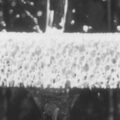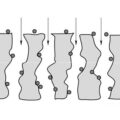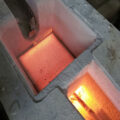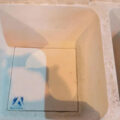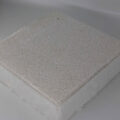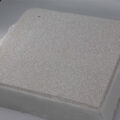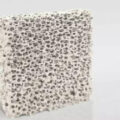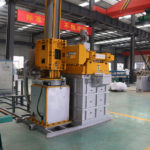Ceramic foam filter molten aluminum alloy filtration is the most effective and reliable method for removing non-metallic inclusions. In principle, there are cake filtration and deep filtration. There are many ways to filter, the best effect is foam ceramic filter plate.

The deep bed filter is large in size, and it takes time and effort to install and replace the filter medium. It is only suitable for the production of large quantities of single alloys. Therefore, it is used by fewer manufacturers and has not yet been applied in my country. The latest development is the Norwegian University of Science and Technology The developed compact deep-bed filter. In this device, the molten aluminum flows downward, and there is a vent plug at the center of the bottom of the device to add inert gas, which forms a gas lift pump with the molten aluminum rising pipe above the vent plug, which can adjust the outlet metal level. The purpose is to improve the filtration efficiency while, More efficient use of filter balls, this device is small and compact, easy to fill, empty and move.
The corundum tube filter has high molten aluminum alloy filtration efficiency, but it is more expensive and inconvenient to use. It is widely used in Japan. Southwest Aluminum developed a corundum tube filter in the 1980s, but the filtering effect was unstable due to assembly quality and other reasons, and it was no longer used in the 1990s. This technology has seen further development in recent years.
On the contrary, the foam ceramic filter molten aluminum alloy filtration is widely used all over the world because of its convenient use, good filtering effect and low price. More than 50% of aluminum alloy melts in developed countries are filtered by foam ceramic filter plates. The technology is developing rapidly. In order to meet the requirements of high-quality products for melt quality, the pore size of the filter plate is getting smaller and smaller. Foreign products have developed from 20, 30, 40, 50 ppi to 6o ppi, and there are many new varieties are available.
For products with higher quality requirements, two-stage ceramic foam filter plates are generally used in developed countries.
The pore size of the first-stage filter plate is relatively coarse, and the pore size of the latter-stage filter plate is relatively small, such as 30/50, 30/60ppi, or even 40/70 configuration, etc. The domestic Southwest Aluminum has double zero aluminum thin, PS plate base, The melt of canning materials and other products is also filtered by 30/50ppi two-stage foam ceramic filter plates. The self-designed and manufactured two-stage thermal insulation filter box realizes that the installation of a filter plate can continuously produce 7 melting times, which greatly reduces the filtration cost.


